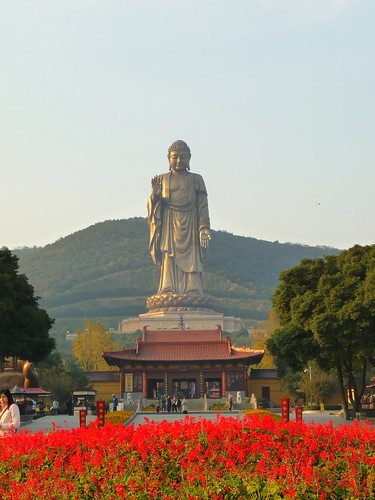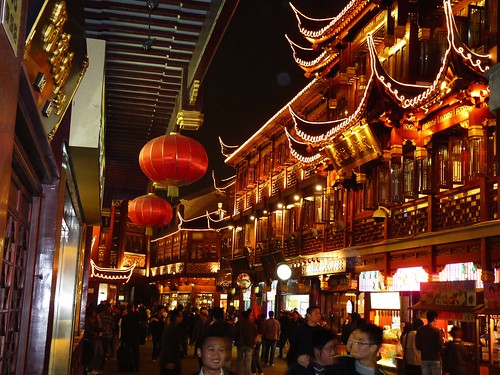Understand China before your travel to the Land of Dragon
This October, I’ll be visiting Beijing (北京), the capital city of China, Tianjin (天津), the Direct Administered Municipal of China (直辖市), and Chengde (成都), the prefecture-level city in Hebei Province (河北省) of China. Last Winter, I visited Shanghai (上海), another directly administered municipal (直辖市), Hangzhou (杭州), historical state in Zhejiang Province (浙江省), Suzhou (苏州), historical state in Jiangsu Province (江苏省), and Nanjing (南京), the capital city in Jiangsu Province. Wow, what am I talking about? States (州)? Province (省)? Direct Administered Municipal (直辖市)? City (市)? States within Province? City not under Province? Municapals directly administered by who?

China, or officially called as The People’s Republic of China (PRC) (中国), is the most populous country in the world with more than 1.3 Billion people. Covering an area of 9.6 Million Km², China is also the 3rd largest country in the world. It is then broken down into 22 Provinces, 5 autonomous regions, 4 directly administered municipalities, and 2 Special Administrative Regions (Hong Kong and Macau). Sounds confusing, isn’t it?
Here are 5 political sub-divisions of China where travelers should be well aware of:
- Provinces (省) – The largest and first level sub-division of China politically administered area. For example, Zhejiang province, GuangDong province and Sichuan province.
- Autonomous Regions (自治区) – similar to provinces but with self-elected governors and are mainly resided by the minority ethnic groups, ie. the Tibet and Inner Mongolia.
- Directly administered Municipals (直辖市) – Large cities directly controlled by the central government, or the Communist Party of China. Beijing, Tianjin, Shanghai, and Chongqing are the 4 Directly Administered Municipals.
- Special Administrative Regions (特別行政區) – Hong Kong and Macau are the only 2 SARs with self administered government and total financial policy control. These regions were used to be the British colony.
- What I used to mix up with Provinces is its historical political sub-division of Zhou (州), or States, where Provinces are larger than Zhou. For example, HuZhou, QuZhou, WenZhou and HangZhou were used to be political sub-divisions in ancient China, are now only big cities of the Zhejiang Province.
Clear? This are basic geographic details a traveler needs to know.

Traveling to China is as adventurous as its sub-divisions implied to, if you don’t understand the Chinese culture and their history. There are too many travel destinations and attractions in this country will full of cultural and historical diversity that inherited from its 6000 years of civilisation. It is impossible to cover all its travel sites within 6 months.
The list of attractions in China include the ancient political administration centre of Forbidden city, Great Wall, the endangered species of Panda, the civilised region of Yangtze River, Huang River, the miracle scenes of Huang Shan, Mount Emei with Buddhist heritage, the before century buried terracotta warriors of Xian, the Buddhist region of Tibet, the beautiful lake of Xihu, The tallest Lingshan giant Buddha, the fastest Maglev train in Shanghai, the cultural capital of Suzhou, and the list goes on, and on, and on, and on….. To briefly understand and experience its attractions, travelers need to spend at least one month on each one of its city.
For Western travelers who wish to visit China for the first time, it could be adventurous if you don’t know the Chinese language and some of its popular travel scams especially in stations and travel sites. It would be the best to subscribe to one of those holidays package with experienced tour guide who can explain on the attractions as you travel along. It is advisable to first visit a few of its major cities such as Beijing , Shanghai, Suzhou and Hangzhou then explore further into its inner cities of Xian, Chengdu, JiuZhaiGou, Mount Emei, and etc.
For seasoned travelers who knows Chinese language and familiar with those travel scams especially, they could stay more days in any city to explore and understand the local culture and its wonderful foods and people.
Family adventures are another great option of travel to some of China’s historical cities and mountain hiking. There are also educational tour for families with children especially during the school break.
No matter how you plan for your China tour, understanding it before your travel sure will make your tour to China a valuable and memorable experience for a lifetime. – Travel Feeder, your ultimate travel photo blog.




Hey I’ve been to Beijing, Tianjin and Chengde. Must visit Great Wall ya.
You’re following tour?
- September 2, 2010@Che-Cheh,
- September 2, 2010Ya lo, going with my mother-in-law, so no better option I think. I’m going to book it at this coming MATTA fair! 🙂